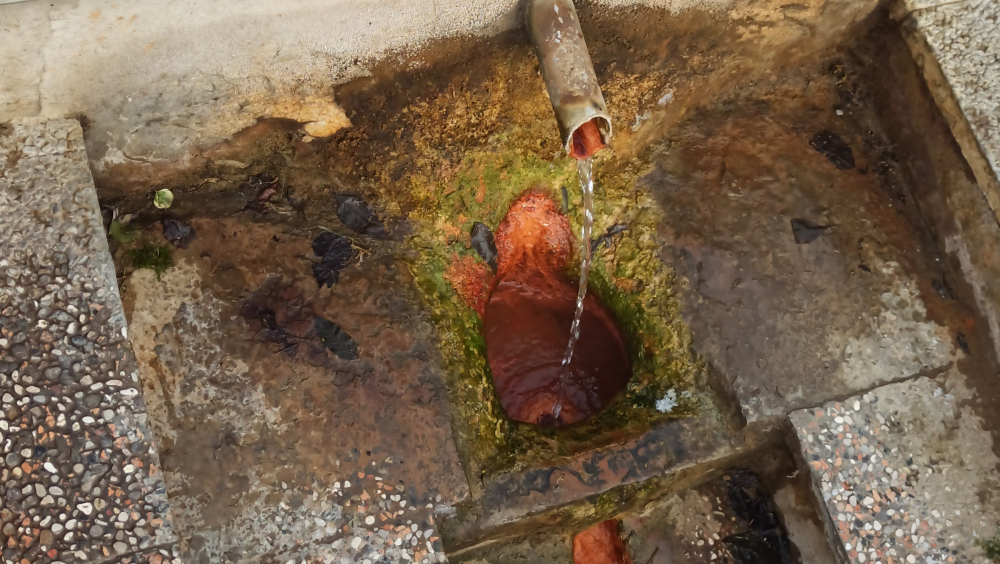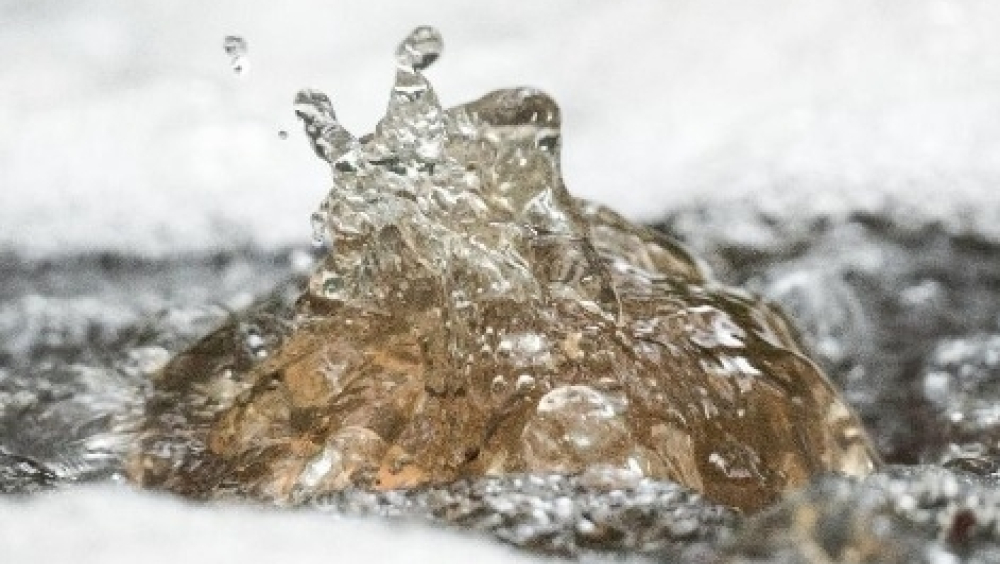It’s all about the bubble
Little bubbles give the water its sparkle. Northeast Slovenia shares a geological history with several neighboring countries. The Earth's breathing results in springs of mineral water or dry springs where only CO2 is released. You can still hear the bubbling, hissing sounds of our Earth’s activity, releasing CO2 from deep within. Throughout history, folk tales of witches cooking up a storm were told when the sounds were especially loud.
But when CO2 mixes with water high in minerals, we get a uniquely flavored water with a sparkle that has been enjoyed for centuries in this area.
“Springs were everywhere. You did not have to look hard or far for them. They were public good; beaten paths led to them due to such a heavy foot traffic of children carrying one to three litter bottles of water that was especially refreshing since it had a that spark in it. Also, you could hear it bubbling just under or on the surface – the earth is breating.” That is a story told over and over in Ščavniška valley in Slovenia that is especially rich in natural springs of mineral water. But the story goes deeper and wider that that small valley.
Northeast part of Slovenia is geologically part of Pannonian pool, which we geographically call Pannonian lowlands. We share this natural phenomenon with multiple European countries that used to share Pannonian Sea and there for an interesting geological history. One of the products of a very active undersurface activities are mineral waters that are very specific to different areas but have that one characteristic – the bubble (CO2).
Easy accessibility of the natural sources, good fresh taste and constant temperature year-round made this water very popular until today. Archaeologist found some artefacts, several meters deep, at the spring in Očeslavci that could hint that people used this water in prehistoric times. These are speculations but there are written sources from 14. century that mentions name Sulz (´special type of water´ in German language) and maps from 18. century onwards that have springs related places on them.
But the most important story is how people lived and live with this water. In this region that consists of several countries we can recognize three ways of development and how people use the springs.
First is natural springs in Ščavniška dolina, where people drank mineral water and still do in some small part. They have some industrial dwellings from where they now get mineral water, but in this part, there was never big industrial usage of the water. People always hade open access to it and took advantage of that.
Second is usage in industrial fillings stations in several surrounding towns (different countries). One just in the other valley – Slovenia´s most famous mineral water Radenska).
The third story are mineral spa. This region is especially famous for them. In a very small area, you can find a lot of them.
Second and third usage of the mineral water are important for the industrial heritage and development of the region and employment opportunities for locals.
But from the view point of heritage conservation and what natural springs mean to people we are even more interested in the stories of locals that lived with the springs and use them. We believe that first you have to know about heritage, to understand it so that you can respect it and preserve it.
As mentioned before natural springs where (almost) everywhere in Ščavniška dolina. Children were the ones who usually went to the springs to get fresh mineral water either to bring it home or to the fields where others would work. A lot of times temptations and opportunities to play or just be children were so tempting that the brought back warm mineral water or no water if the clay pitchers were broken during the rough play.
Some springs were basically just holes in the ground, some had wooden frame around them and you needed a stick a rope to be able collect mineral water. Others had more sophisticated system of pipes where people would come and stand in line to get mineral water. Especially one spring was hugely popular (Očeslavci) and people came with horse wagons, on foot and later with bicycles (some 30 km distance one way) to get the water for their pubs, festivities or to sell. Even if the mineral water was public good, there was an unwritten rule that the locals and for example owners of the land had the first serve advantage and did skip the line.
Water was mainly for drinking, by it self or mixed with wine or cyder. They also used it to bake pancake styled pastry from buckwheat.
But where does this water come from? Today we know all the scientific explanation about geological phenomena, but how did people explain this before the science took over. In Karel Henn´s personal diaries (founder of spa Radenci) we find a story of how he first heard bubbling, groaning and hissing sounds in the middle of the night when he was passing the area. His driver told him those were witches preparing for the dance. They are cooking dumplings to throw them on the fields. They are making hail.
Those stories do not live anymore, but other stories of witches do and beliefs of witchcraft in this part of Slovenia were important part of intangible heritage. Working with local community we want to research and collect as many memories as possible. While working with children, younger locals and visitors to preserve them and on the long run preserve the natural springs of mineral water.
Water is the source of life. It is also source of numerous stories. Starting with mythical creatures that live in it or have the power to manipulate with it. It also tells story of development of settlements, long struggle of farmers to control it and gain good soil in wet areas, industrial development. But water also tells simple stories of people that took what was available. They took it as public good and should be available to everyone. In our story there was never prohibition to pour water for any kind of propose. The springs got closed down when industry got involved. They bought the land with the springs to eliminate competition. While their industrial dwelling could change the flow of natural spring. Not just filling industry, other development induced procedures in landscape and trying to manage nature, like regulation of river Ščavnica heavily transformed natural springs. The quality of water has drastically changed with the transformation of the farming methods.
We do not share only a “geological” story of mineral water with our surrounding countries. We also share global questions and attitude toward water and heritage. Whose is water. How do we take care of it. What are the actions we take to preserve our knowledge and understanding of water not only from biological perspective but also as a society that does not only have rights but joint responsibility towards our sources.

